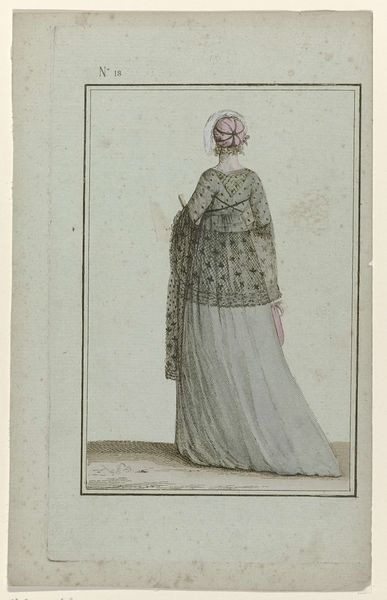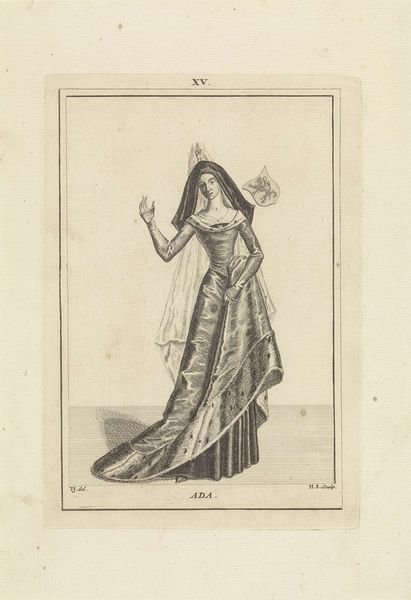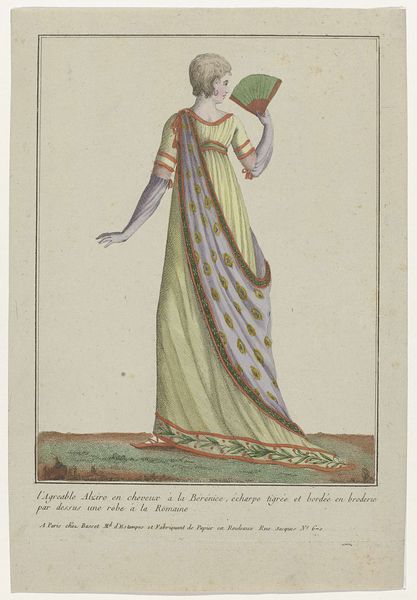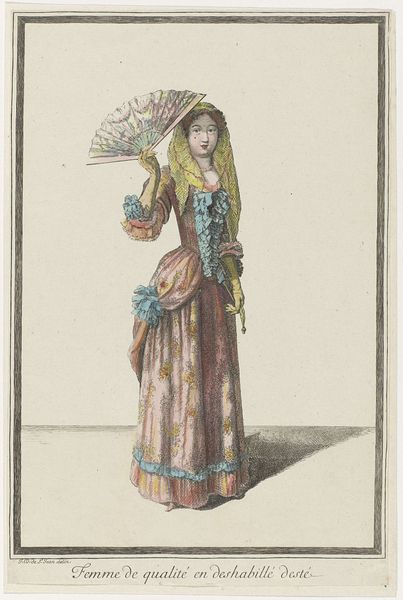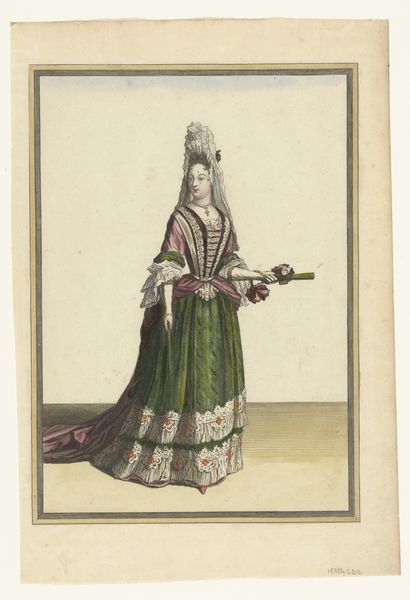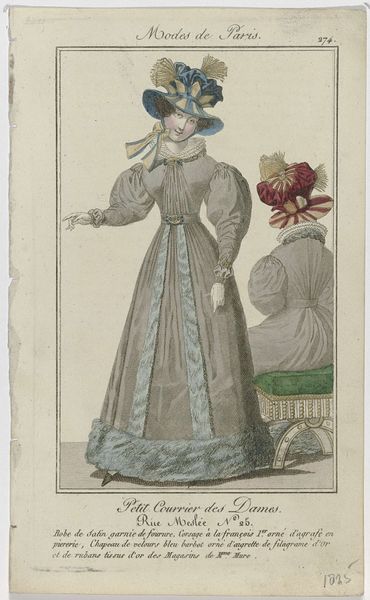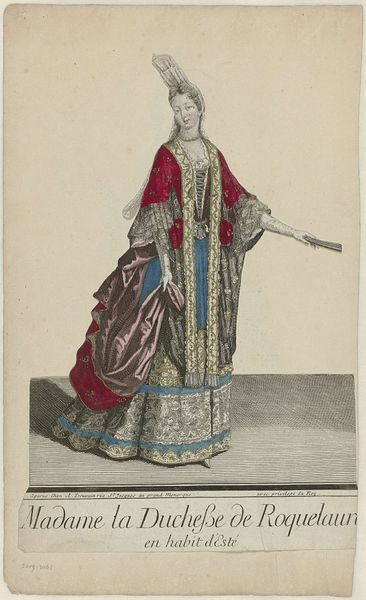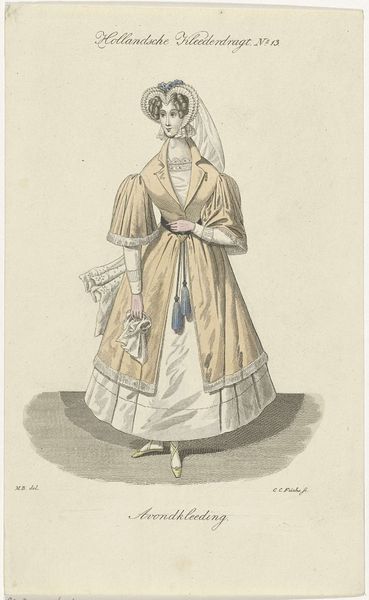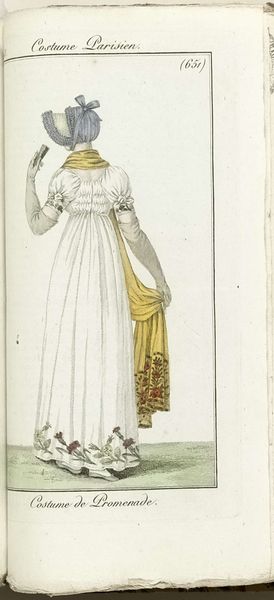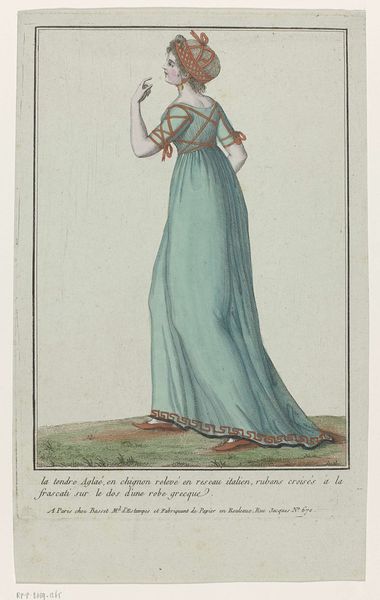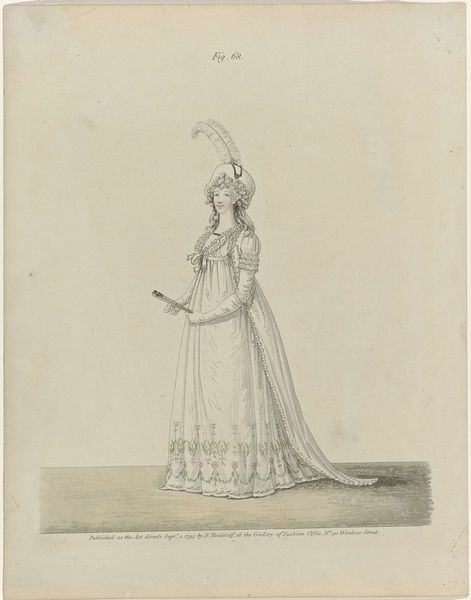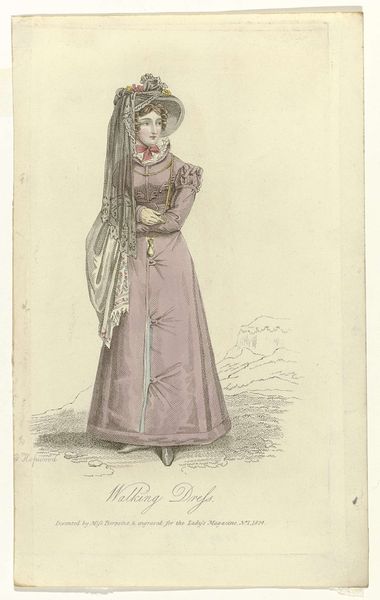
Dimensions: height 193 mm, width 106 mm
Copyright: Rijks Museum: Open Domain
Curator: Let's have a closer look at "Kabinet van Mode en Smaak, ca. 1792, Nr. 26 (XXVI)." It's from around 1792, an anonymous work here at the Rijksmuseum. It's quite detailed; a drawing enhanced with colored pencil. Editor: It has an immediate sense of delicate, almost fragile elegance, wouldn't you agree? The linear quality and soft palette make her look somewhat… ethereal. The contrasting heavy drape and a sort of sheer skirt is striking. Curator: Indeed. These fashion plates held a vital role in disseminating sartorial trends across Europe. They demonstrate how clothing functioned as a marker of status and cultural affiliation in the late 18th century. The details would be of utmost importance to a society becoming increasingly consumerist. Editor: Speaking of details, the level of workmanship is worth noting. Considering the media involved– print highlighted with colored pencil– someone devoted serious labor to the colouring and refinement of these details. The hat, that gossamer flower… were these artisanal skills highly valued, or were they looked down upon because of their association with femininity? Curator: It’s complicated. On one hand, skill and refinement were celebrated, a hallmark of Rococo artistry. Yet, as you point out, associations with femininity often devalued such labor, placing it outside the traditional hierarchy of "high art". Gender norms of the time restricted women's participation in the broader economy, including production of such specialized skills, placing the control of such labor mostly in male-dominated manufacturers. Editor: The choice of materials, even on paper, tells its own story. Fine pigments weren’t exactly cheap. We see that reflected here, I think. Do you imagine this plate informed purchasing decisions of the bourgeois ladies or acted as an aspirational piece for those with a modest wage? Curator: Almost certainly it informed purchasing choices. Fashion engravings catered primarily to affluent consumers who sought to remain ahead of the curve and actively took the place of physical goods to guide production by dressmakers in localized markets. This print embodies a crucial step in the professionalisation and consumption of fashion. Editor: Thinking about the present and today’s methods for the spread of ideas through digital space… this carefully crafted image takes on new resonance. We see in this art piece not simply a fashion moment but a blueprint for the construction of desire itself. Curator: Precisely! A snapshot of 18th-century consumer culture that still echoes today, fascinating.
Comments
No comments
Be the first to comment and join the conversation on the ultimate creative platform.
